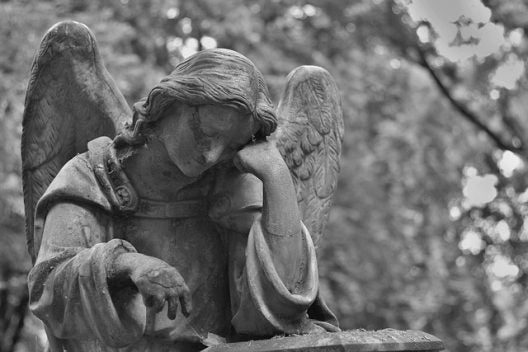First monkeypox case reported in Central region
Published 6:34 pm Saturday, July 23, 2022
|
Getting your Trinity Audio player ready...
|
A presumed case of monkeypox has made its way to the Central Region of Virginia.
This brings the number of cases to 44 as of Monday, July 18, in the Commonwealth.
The Central Region encompasses the counties of Amelia, Cumberland, Buckingham, Prince Edward, Charlotte, Lunenburg, Nottoway; the metro area around Richmond (Richmond, Henrico, Hanover, New Kent, Goochland, Charles City, Chesterfield, Powhatan, Colonial Heights, Petersburg, Hopewell, Prince George, Dinwiddie); and down to the North Carolina border (Emporia, Surry, Sussex, Greensville, Brunswick, Halifax, Mecklenburg).
According to the Virginia Department of Health (VDH), the first reported from the Central Region is an adult male who recently traveled out of state.
VDH said the patient is currently isolated and the local health district is identifying close contacts of the case, enrolling them in monitoring and offering vaccines if needed. Unlike the COVID-19 cases that are released by health districts currently because there is a small number of monkeypox cases, the VDH is only releasing cases by regions to protect the identities of those infected.
Piedmont Health District Director Dr. Maria Almond said for all reported close contacts of monkeypox cases, the VDH will monitor their health for 21 days after their last exposure to a case and, if needed, will coordinate vaccination after the exposure.
“VDH is also monitoring Virginia residents who have been identified as close contacts of people with monkeypox in other jurisdictions,” Dr. Almond said.
On Monday, July 11, the total number of monkeypox cases in the United States was listed as 790. Just seven days later, on Monday, July 18, the Center for Infectious Disease Research and Policy was reporting 1,814 cases in 45 states.
Washington D.C. is reporting the most monkeypox cases per capita in the U.S. As of Monday morning, July 18, D.C. reported 122 cases and has identified more than 530 close contacts of those cases since the first case was detected back in the city in early June.
“We continue to keep a careful eye on the spread of monkeypox within Virginia,” Dr. Almond said. “Many individuals infected with monkeypox virus have mild, self-limiting disease.
Dr. Almond said currently, there is no treatment explicitly approved for monkeypox virus infections. However, antivirals developed for use in patients with smallpox may prove beneficial against monkeypox.
Although there is no approved treatment for monkeypox in the U.S., two vaccines, JYNNEOS and ACAM2000, are available for the prevention of monkeypox. They are available through the federal government as post exposure prevention for people who had close contact with a person with monkeypox and are at the highest risk of exposure.
“Right now, all available doses of vaccine are being sent to areas of the state where transmission is the highest to provide to those populations most at-risk due to exposure or even the potential for exposure,” Dr. Almond said. “However, throughout the state, careful planning is occurring to position us well to respond as needed wherever we reside. This is currently a manageable outbreak, but we need to act effectively across the board. Health care providers need to know how to identify and test for this viral infection; community members need to seek care immediately for any concerning symptoms, and public health needs to work decisively to staunch further transmission through identification of contacts and appropriate use of vaccines.”
According to the VDH, the federal government is expanding monkeypox vaccination access for individuals at risk and working to make testing more convenient for healthcare providers and patients across the country.
“VDH is actively working with our federal partners to make these services more accessible for Virginians,” VDH officials said in a July 14 news release.
Monkeypox is a potentially serious viral illness characterized by a specific type of rash. Rash lesions can begin on the genitals, perianal region, or oral cavity and might be the first or only sign of illness.
Co-infection with sexually transmitted infections has been reported. Some patients also have a fever, headache, muscle aches, exhaustion and swelling of the lymph nodes before developing a rash, according to VDH.
Symptoms generally appear six to 14 days after exposure and, for most people, clear up within two to four weeks. State health officials explain that person-to-person spread occurs with close contact, direct contact with body fluids, or contact with contaminated materials such as clothing or linens.
Anyone with symptoms consistent with monkeypox should seek medical care from their healthcare provider immediately, especially those in one of the following groups:
• Those who have had contact with someone who had a rash that looks like monkeypox or someone who was diagnosed with monkeypox.
• Those who have had skin-to-skin contact with someone in a social network who has monkeypox. This includes men who have sex with men.
• Those who traveled to places or attended events where monkeypox cases have been confirmed in the month before symptoms appeared.
• Those who have had contact with household items, such as towels, bedding or clothing used by a person with suspected or known to have the monkeypox virus infection.
• Those who have had contact with a dead or live wild animal or exotic pet from Africa or used a product derived from such animals (e.g., game meat, creams, lotions, powders, etc.).





